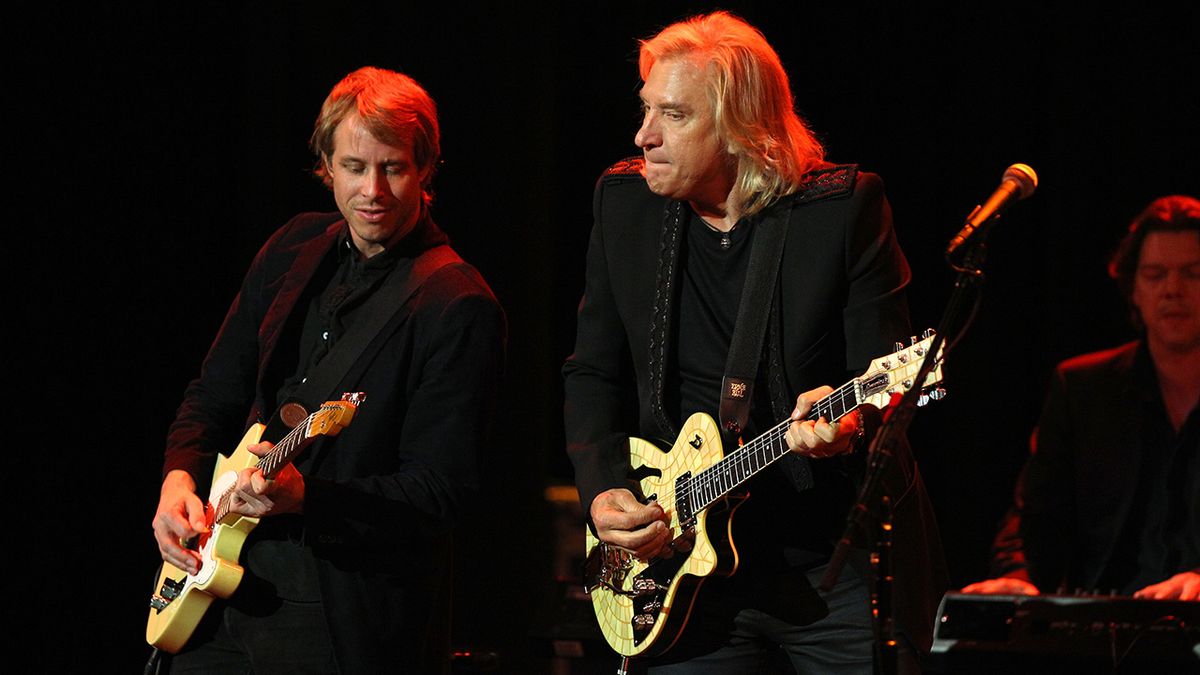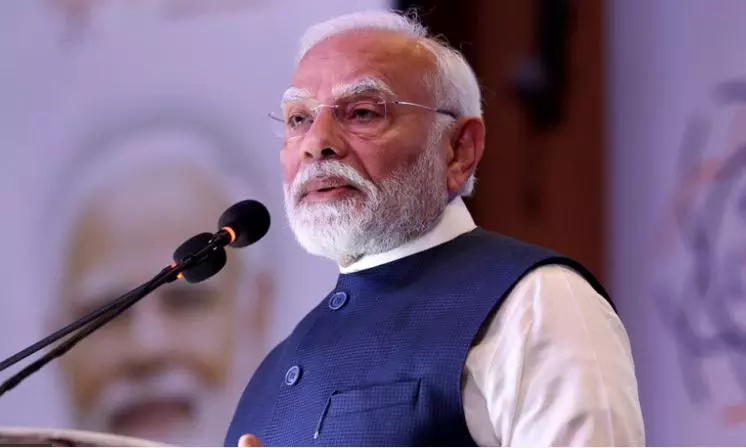
“I’m like a squirrel,” Greg Suran says. “I’m thinking, ‘Look – Eddie Van Halen!’ then ‘Oh, Stevie Ray Vaughan – that's cool’ then ‘Holy shit, Robert Fripp, that’s amazing!’ I was always darting around, trying to learn different things.” That’s brought him versatility, which he’s used to effect with Joe Walsh, The B-52s, Lionel Richie, The Goo Goo Dolls and Sunny Day Real Estate – and he’s also in the American Idol house band.
“I kind of throw myself in the fire a lot,” Suran laughs. “I learned enough bits and pieces to get enough vocabulary that I could fake any style pretty well. For the most part, I’m usually willing to go for it, and embarrass myself if I have to.

” But he adds: “Going from one gig to another, I’ve never felt like I wasn’t up to it. When I get into a performance situation it’s like musical smelling salts." Suran’s greatest strength is his humility.
“When I’m on a gig with another guitar player who does something so much better than me, I’m blown away – and that happens all the time. The great thing is that you pick stuff up from them. “It pushes you; every gig has a unique way of bringing something out in you that you didn’t think you had, as long as you’re open to it and put the effort in.
” When did you feel like you’d found your sound on guitar? “I don’t get that one a lot, because people mostly know me for playing with other artists. If I’m being honest it was probably in the late 1990s. I had my band, Cupcakes, and we had a deal with DreamWorks Records.
I was learning about the things I thought were unique about guitar playing, trying to separate myself a bit. “Guitar playing in the ‘90s differed from the ‘80s when it was about virtuosity and technical proficiency. The ‘90s were more punk and indie, and guitar playing was approached differently.
It wasn’t about technique; it was about concept, ambient textures – fuzz , delay, and things that made me feel something.” How did you hook up with The Goo Goo Dolls in the early 2000s? “Cupcakes broke up, and I did about a year and a half with Sunny Day Real Estate, then they broke up. I was still young enough to be like, ‘What am I going to do about all this?’ and I thought, ‘I could do the hired gun thing.
’ “I’d been to music school; I’d studied; I thought I was capable of it. I called DreamWorks and talked to Beth Halper, Butch Vig’s wife. I said, ‘There’s a dude called Barry Squire who auditions guitarists in LA.
’ She said, ‘I’ll put in a good word.’ “He got me a Goo Goo Dolls audition – I kind of talked myself into it, like, ‘Barry, please give me an audition!’ I had to work that a little on the phone; but in the end they were like, ‘Yeah, sure,’ even though they already had about 12 people lined up.” What gear were you using at the time? “I had my Bogner Ecstasy head in a road case, a mandolin that I bought at Guitar Center, a Les Paul and my pedalboard .
I literally checked all these things onto a Southwest flight from Chicago. When I auditioned we played Broadway and another was Iris . I think it was after two or three songs that they told me I had the gig, which was kind of crazy.
” After The Goo Goo Dolls, you worked with Joe Walsh – a totally different animal on guitar. “I was Jewel’s music director for a while after The Goo Goo Dolls, and I hired a friend of mine, Drew Hester, to play drums. Drew was playing with Joe, and Joe needed a guitar player for a big tour.
Drew recommended me, and I actually went to Joe's house in LA and into his studio.” What were your first impressions of Joe? “Joe was like, ‘Alright, come on in – let’s jam.’ We basically played some blues riffs and we did a couple of his songs; we just kind of played guitar.
And he’s like, ‘Yeah, okay, sounds great.’ That was it!” The gear you used with Joe must have been very different from The Goo Goo Dolls. “For sure.
I’ve changed my gear around a lot, depending on the gig. With Joe I was playing through a Divided by 13 head that was kind of like a Vox AC30. Then I was going into a ’65 Fender Princeton Reverb – so two amps.
“I ran them both clean with a Keeley modded Boss Blues Driver for a little bit of overdrive. Joe was also playing through two amps; I wanted my two to be a little smaller than his. I didn’t want to overpower Joe Walsh!” Joe is a seat-of-his-pants type of player.
What was that like for you? “It was great; I loved it. Joe had a semi-truck full of amps and swapped them out every two or three shows. He’d be like, ‘What do you think?’ I’d be like, ‘Sounds great! It sounds just like you every time.
’ “He loved tinkering with ham radios, pedals and amps; he just loves exploring. I feel like all of his tone comes from his hands. I know that’s a cliché but in Joe’s case it couldn’t be truer.
” What’s the most important lesson you learned from Joe? “I came in hot, wanting to really impress him – most guitar players would want to impress a hero like that. We’d trade solos sometimes, like on Turn to Stone , and he’d give me a solo on Life of Illusion . It was always interactive.
I’d try to bust out my best hot and fast licks, and he’d always be so helpful. “He’d say, ‘All those licks are cool – but just slow it down, man. Tell a story.
’ That classic, old-school building of the arc of a solo thing: I really took that to heart. When someone like Joe tells you that, and you’re playing alongside him, you want to do it. “He’ll do his thing.
If you play something cool on stage, he’ll go, ‘Yeah!’ He’ll verbalize it to you. And all you want to do is make him do that again. It was a real education – I got better at thinking lyrically, not trying to impress other guitar players but making the audience feel something.
Joe is so good at that.” Would you say you’re a different player after gigging with Joe? “Yes! I’ve been fortunate to play on some high-level stuff that's pretty eclectic. I learned the best way to grow as a guitar player is to have different musical experiences and be challenged.
” For example, after working with Joe you hooked up with The B-52’s. “The Joe Walsh tour ended. We had a dinner where he let everyone know he was going back to the Eagles for a while and the band wouldn’t be very active.
Then Sterling Campbell, drummer in The B-52s, and Paul Gordon, the dearly departed keyboard player, called me and said, ‘Dude, Is there any way you could be in New York tomorrow to play a gig with us?’ “Keith Strickland was retiring from touring, and this gig came up as a last-minute thing, and he couldn’t do it. So I was the first person to play with The B-52’s who was not an original member of the band. It was huge pressure.
” How did you handle learning such idiosyncratic guitar parts? “I had to learn all the songs on a red-eye flight to New York. I had my iPhone loaded up with the songs, and I started charting stuff out on the flight. The tuning was hard to figure out – especially on a plane without a guitar in my hands! But once I got a guitar, I started decoding the tunings; I think I got most of them right.
” “The gig went great, and the band was like, ‘You’re our guy if you want this gig.’ With Joe wrapping up, I was like, ‘Yeah, this works out great.’ I told Joe about it and he was like, ‘Oh, that's great – those girls with those big beehive hairdos?’ I said, ‘Yeah, those guys!” How did your rig change with The B-52s? “I love that music and the guitar playing.
My whole thing was, ‘If I’m a fan going to see this band, the worst thing would be to see some guy doing it wedding-style or like a bar band.’ The only way to do that was with the proper tunings, guitars, and tone. “I really put work into it.
I got a couple of Eastwood guitars that were Mosrite copies and tried to be faithful to the brilliant parts and not reinvent iconic things.” Be it the Goo Goo Dolls, Joe Walsh, or The B-52s, has there ever been something you couldn’t master? “I wouldn’t say any tone escaped me – but there’s one intro for The B-52’s song Roam that has a tape flange or something. I was never quite happy with that or with how it matched the record, but it was still pretty cool.
” For the last few years you’ve been the house guitarist for American Idol . That gig is tailor-made for you, considering you can play anything at any time. “That really is what the job is about.
It’s a great band. I’m lucky to play with such great people who are incredibly talented and super versatile. Nailing tone, parts, and getting the essence of the style, and really playing it legit matters.
That pushes me harder. Sometimes you learn 86 songs in a week; other times it’s as little as 18, if you're lucky!” If you had to, could you boil your rig down to one guitar? “Oh, yeah! I’m actually doing it these days. I played with Lionel Richie – I’ve been playing with for the last couple of years – at a casino in Las Vegas.
And Sunny Day Real Estate had a gig that night too. I finished the set with Lionel and went straight to the Sunny Day Real Estate gig, all with a Ciari folding guitar called the Ascender. “If I could only take one guitar to any gig, if not the folding guitar, it would probably be a Telecaster with my Neural DSP Quad Cortex .
With those two things I could do a gig anywhere.” What’s your best advice for someone looking to get into your line of work? “Practice a lot and learn as much as you can. If you want to do be playing with a lot of different artists, be open to different kinds of music.
Listen to a lot of music. It’s about being open to experiences. “I never went, ‘No, I’m too cool for that,’ or, ‘That’s not my thing.
’ If something seems interesting, just go for it. The way this business works is other musicians recommend other musicians – so build relationships, be open to new experiences; and eventually you’ll get your opportunities.”.













